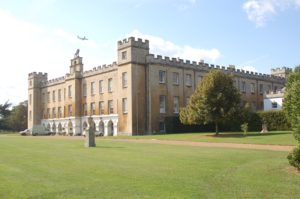
- This event has passed.
SOLD OUT – Historic Building workshop, Care and repair of historic masonry structures, Syon Park – SOLD OUT
March 15, 2018, 09:30 - 17:00
Historic Building workshops – SOLD OUT
Care & repair of historic masonry structures
Date: Thursday 15 March 2018
When: 0930 – 1700
Where: Holiday Inn, Brentford and Syon House
Cost: £125.00 plus VAT (£150.00) to include seminar proceedings, all refreshments, lunch, entry to Syon Park and comprehensive delegate pack
The day’s course will consider in depth three aspects of building conservation.
[custom_list style=”list-1″]
- The care and repair of historic stonework
- Understanding historic mortars and the use of lime in conservation
- The historic Fabric of Syon Park including decorative plasters and finishes, and glass.
[/custom_list]
The morning session will take place at the Holiday Inn, Brentford Lock which is a 10 – 15 minute walk from Syon House. Free parking is available and the venue have assured me that parking is not an issue. There is also free parking at Syon Park.
The venue has been carefully chosen as the house represents fine examples of a country house with a long history of adaptation and change from a medieval monastic establishment to a grand 18th century estate. The building was mainly constructed in stone and was refaced in Bath Stone in the 1820s. The interior of the house reflects changing ideas of decoration and comfort with one of the finest examples of decorative plasterwork by Robert Adam to be found in the south of England. The Great Conservatory designed by Charles Fowler was completed in 1827 and was the first to be built of metal and glass on a large scale.
Speaker
Kevin Stubbs BA(Hons) DipBldgCons(AA) IHBC CertEd
Kevin Stubbs is a Historic Buildings Consultant and comes with a background of education, archaeology and building conservation. He was Director of Archaeology for the Test Valley in Hampshire and later moved to Hampshire County Council to join the Historic Buildings Bureau, where he became the Principal Buildings Conservation Officer for the County. For eleven years he acted as the Director of a Conservation Centre and now runs his own Historic Building Consultancy and Training Company.
He advises on the repair and maintenance of all historic structures and provides training at all levels for the building conservation industry. This includes the development of historic building technology, traditional materials and hands-on craft training. Work for Local Government Authorities includes Conservation Area appraisals, historic building condition surveys and feasibility studies. He has provided training exercises with local communities to raise awareness of their village plans and local heritage interpretation documents and he has provided Traditional Skills Awareness Courses for a number of bodies. He undertakes the Historic Analysis of buildings and produces: Statements of Significance; Method Statements; Impact Assessments and Specifications for the repair and conservation of traditional buildings.
He lectures for various CPD providers, Universities and national building conservation organizations including SPAB, RICS and the Weald and Downland Museum. Topics include: Bricks and Mortar; Lime, Plasters and Renders; Cob and Earth, Timber Frame and Stone Structures and Traditional Roofing.
The day will include formal Power Point presentations, material handling sessions and a visit in the afternoon for first hand observations of the building.
Main themes
Care and repair of historic stonework
Stone Buildings are some of our oldest surviving structures in the country and there are many from the medieval and later periods in need of sensitive care and repair. The use of stone was not just confined to the grand buildings and churches but was also used for a variety of ordinary domestic and vernacular buildings. The methods of quarrying, selection and use of stone in the past contributes much to the character and grain of our historic Cities, Towns and Villages.
A basic understanding of historic stone structures will be developed. The identification of causes of failure and the selection of appropriate The venue has been carefully chosen as the house represents fine examples of a country house with a long history of adaptation and change from a medieval monastic establishment to a grand 18th century estate. The building was mainly constructed in stone and was refaced in Bath Stone in the 1820s. The interior of the house reflects changing ideas of decoration and comfort with one of the finest examples of decorative plasterwork by Robert Adam to be found in the south of England. The Great Conservatory designed by Charles Fowler was completed in 1827 and was the first to be built of metal and glass on a large scale.
Care And Repair of Historic Masonry structures and Selection of Mortars
The first important stage of this process is to identify the sources which have caused the problems of decay to occur; these must be resolved before the stonework can be repaired. It is also important to understand the nature and function of historic mortars and the dangers of the use of modern cementitious products. The use of inappropriate mortars can result in the rapid deterioration of historic masonry and long term structural problems. The problems of water movement, salts, frost and the cleaning of stone will be examined. The methods of re-pointing will also be considered, not only for aesthetic reasons, but to ensure the correct performance and durability of the new joint.
The Historic Fabric of Syon Park
The core of the building is the remains of the Bridgettine abbey constructed in 1431. The nunnery was one of the wealthiest in England at its dissolution in 1539. The site was acquired by the 1st Duke of Somerset and remodelled as a Tudor country house in the Italian Renaissance style. In 1594 the property was acquired by Henry Percy, 9th Earl of Northumberland and has remained in that families ownership ever since.
In 1762 Capability Brown was commissioned to redesign the landscape of the parkland and Robert Adam the interior of the house. This was one of the first large scale commissions undertaken by Adam in the Neo-classical style and also reflected his interest in Roman antiquities. The exterior of the house retained its original architectural form and a number of rooms had to wait to be upgraded until the following century as works ceased in 1769 due to the high costs of Adams lavish schemes.
In the 1820s and 1860s the house underwent further refurbishment but the Adam interiors survived unaltered.
In 1951 the house was first opened to the public and over the last 10 years there have been a number of conservation projects including major works to the roof.
Download the Flyer for Syon House
Download the syon booking form
Or book online below

